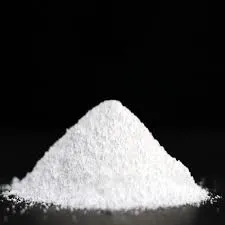Physico-Chemical Treatment of Wastewater A Comprehensive Approach
The increasing population and rapid industrialization have led to a significant rise in wastewater generation. With the growing concerns regarding environmental sustainability and public health, effective wastewater management has become a pressing priority. Among various treatment strategies, physico-chemical treatment methods play a crucial role in removing contaminants and facilitating the safe discharge or reuse of treated water. This article examines the principles, processes, and significance of physico-chemical treatment of wastewater.
Principles of Physico-Chemical Treatment
Physico-chemical treatment of wastewater involves a combination of physical and chemical processes to remove pollutants. The primary objective is to reduce the concentration of organic and inorganic contaminants to meet environmental discharge standards. This treatment method is particularly effective in removing suspended solids, heavy metals, nutrients, and other hazardous substances.
The principles behind physico-chemical treatment include the application of various techniques such as coagulation, flocculation, sedimentation, adsorption, and chemical precipitation. Each of these processes exploits different physical and chemical properties of the contaminants to achieve efficient removal.
Key Processes in Physico-Chemical Treatment
1. Coagulation and Flocculation Coagulation is the process where chemicals, known as coagulants (commonly aluminum sulfate or ferric chloride), are added to the wastewater to destabilize and agglomerate suspended particles. This is followed by flocculation, where gentle mixing promotes the formation of larger flocs that can settle more easily during the sedimentation phase. Together, these processes effectively remove turbidity and suspended solids.
2. Sedimentation Following coagulation and flocculation, gravity-driven sedimentation allows larger flocs to settle at the bottom of the treatment basin. This results in the separation of clarified supernatant water from the solid sludge, which can then be further processed or disposed of.
3. Adsorption Adsorption involves the adherence of contaminants to the surface of solid materials, typically activated carbon or other adsorbents. This process is particularly effective for the removal of organic compounds, taste and odor, and certain heavy metals. The selectivity and efficiency of adsorption depend on the characteristics of both the adsorbent and the contaminant.
4. Chemical Precipitation This technique is often employed to remove dissolved heavy metals and inorganic ions. By adding specific chemicals, such as lime or sodium hydroxide, the contaminants are converted into insoluble compounds that precipitate out of solution. The precipitates can then be separated through sedimentation or filtration.
physico chemical treatment of wastewater

5. Advanced Oxidation Processes (AOPs) AOPs are advanced treatment methods that use powerful oxidants to produce hydroxyl radicals, which can effectively break down complex organic pollutants into simpler, less harmful compounds. These processes are used for treating recalcitrant organic substances that are otherwise resistant to conventional treatments.
Significance of Physico-Chemical Treatment
The significance of physico-chemical treatment in wastewater management cannot be overstated. It offers several advantages
1. Efficiency Physico-chemical methods often provide rapid and high-level removal of a wide range of contaminants, making this approach suitable for treating varied wastewater types, including industrial effluents and municipal sewage.
2. Space-Saving Compared to biological treatment systems, physico-chemical treatment processes typically require less space, making them advantageous for urban areas with limited land availability.
3. Immediate Results Unlike biological processes that may take weeks to demonstrate effectiveness, physico-chemical treatments provide immediate results, making them particularly valuable for urgent treatment needs.
4. Flexibility The ability to adjust chemical dosages and operational parameters allows for greater flexibility in addressing diverse wastewater challenges.
Conclusion
As global water resources become increasingly strained, the need for effective wastewater treatment has never been more critical. Physico-chemical treatment stands out as a versatile and efficient method for managing wastewater pollutants. By integrating these techniques into wastewater treatment plants, communities can enhance their environmental sustainability efforts and address public health concerns effectively. As research and technology advance, physico-chemical treatment methods will likely evolve, offering even more robust solutions to the challenges posed by wastewater management in the 21st century.

